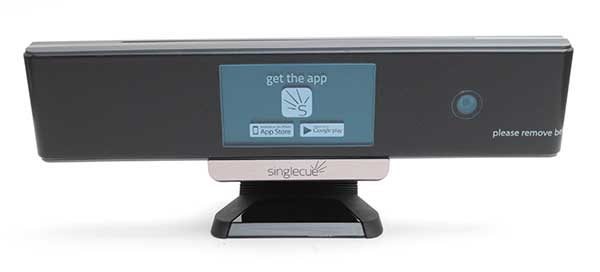
Has remote control overload got you down? Would you trade a handful of remotes for your TV, cable box, satellite box, Roku, AV receiver, DVD and more for one universal remote that you can control just by raising your finger? The Singlecue is the touchless remote control of the future. But does it work better than traditional battery powered remotes? Let’s find out.
What is it?
The Singlecue is a universal remote control that recognizes gestures to control your TV, DVR, other home theater devices, lighting and more without pressing any buttons or using your voice.
What’s in the box?
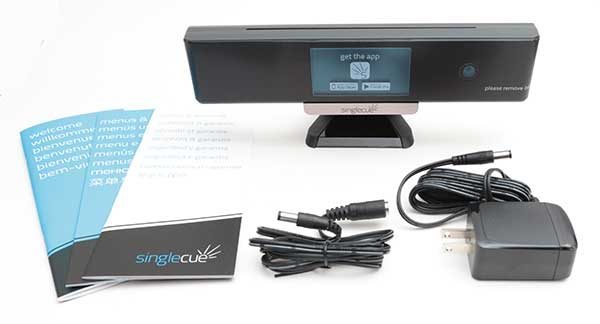
Singlecue Gen2 remote control
AC adapter
Power extension cord
Instructions
Design and features
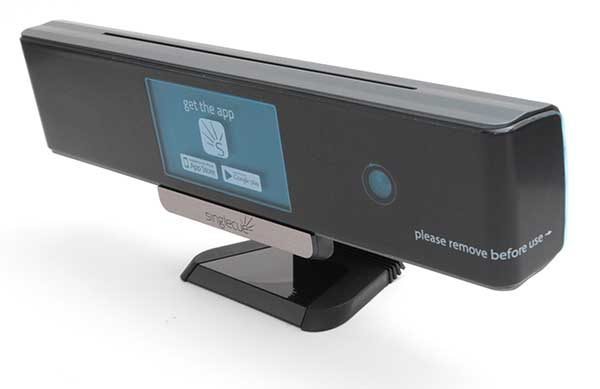
The Singlecue looks like a soundbar or some type of speaker, but it’s a gesture sensing remote control that has a camera and an LCD display on the front.
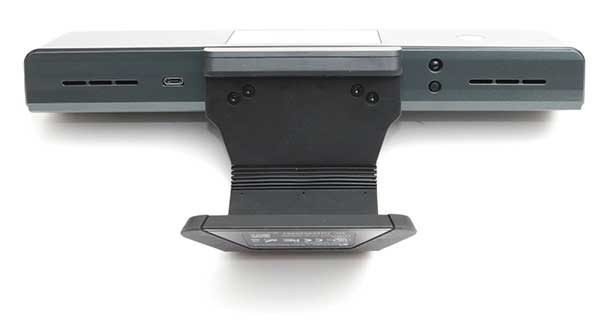
On the bottom of the Singlecue is a micro USB connector that is not for customer use, a status LED / IR blaster, and a pairing button.
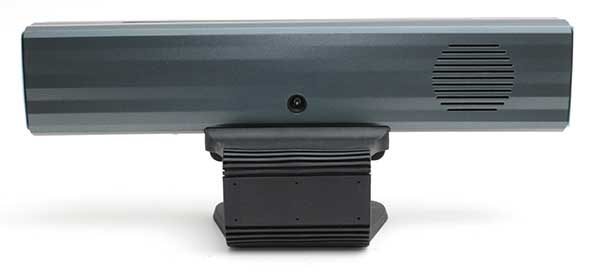
On the back of the Singlecue you’ll find the power port and speaker.
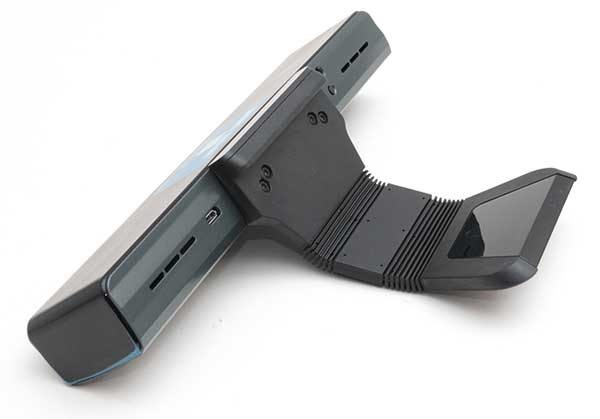
Attached to the Singlecue sensor is an adjustable base that unfolds if you want to mount the sensor on the top edge of a TV instead of placing it on a shelf above or below the TV.
Setup
The Singlecue needs to be mounted facing where you normally sit up to 13 feet (4m) away.
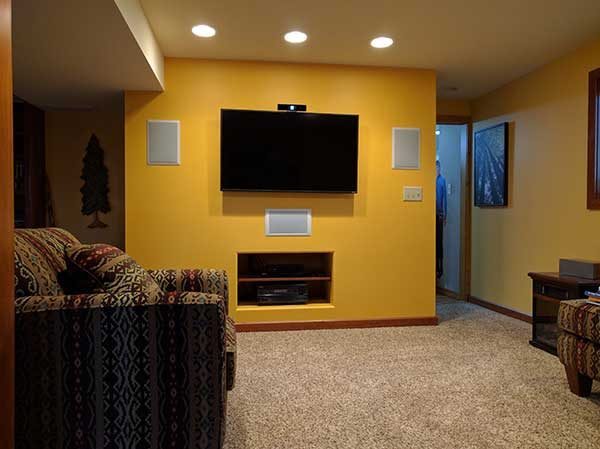
Since my Vizio M50-D1 TV is mounted on the wall, I mounted the Singlecue on the top edge of the TV and routed the power cable behind the TV and through the wall where I have a small room with all the cables and power connections.
Once placed, the rest of the setup is done through the Singlecue app. I used my Nexus 6P for this task. You really only need the app for setup and adding new devices and activities. Once those setups are done, you do NOT need your phone or the app to use the Singlecue remote. All you need is your finger.
The app allows you to add all your home theater devices and even other devices like connected lights and the Nest thermostat. The app leads you through setting up your devices and testing to make sure they work with the Singlecue remote.
I added a Vizio TV, my Onkyo AV receiver, DirecTV satellite box, Nest thermostat and a standalone Roku streaming device.
After the devices are added, you then create activities which are like macros that connect several devices so that you can turn everything on with one gesture and then you will have the various device commands available to you while in that mode.
Using the Singlecue remote
There are only 4 basic gestures that are recognized by the Singlecue remote. To “wake” up Singlecue, you raise your index finger like you’re pointing to the ceiling or are trying to get the attention of a waiter at a restaurant. That gesture will show a lock on the Singlecue’s display and then you use the thumb and index finger pinch motion to “select” or unlock the remote.
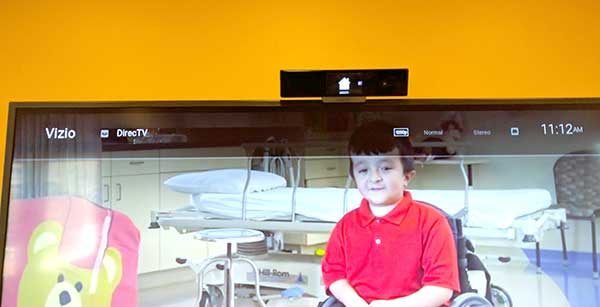
From there you can navigate left or right through the Singlecue menus by “swiping” your hand left or right while still pointing up with your index finger. The other gesture is the “shhhh” gesture where you bring your index finger to your lips. When you do this, Singlecue will toggle mute on and off.
The Singlecue’s LCD isn’t very big, so some of the onscreen icons/commands can be tough to recognize. The image above shows all the different icons. I mainly had trouble seeing if I was selecting volume up or volume down because the only difference in the icons are the small + and – signs.
See it in action
Adjusting volume, switching activities and muting are all pretty easy to do with the Singlecue. Where things get a little tougher and more frustrating is when you try to use Singlecue to navigate onscreen menus. In the video above, you can skip to around the 1:10 mark to see how tough it is just to play a video in Netflix on my Roku. Navigating menus is a real hassle and not worth the effort if you have a regular remote control next to me.
It’s also important to note that the Singlecue remote times out very quickly, so you have to wake it up with the finger pointing up gesture followed by the pinch gesture to unlock it before you can do anything else including the muting gesture.
I’ve been testing the Singlecue for a couple of weeks and sometimes it works great and other days I want to pull what little hair I have out when trying to use it. Sometimes I have to do the pointing up gesture 3 or 4 times before the Singlecue wakes up and sometimes I won’t be doing any gestures at all and something will trigger the Singlecue to change the channel.
Final thoughts
I like the tech behind the Singlecue remote, but in practice, I found that it took more time to wake it up, and navigate to the command than it did to just press a button on the physical remote next to me on the couch. The only time I found the Singlecue remote to be “better” than my physical remote was when my fingers were greasy from eating food or snacks in front of the TV and I didn’t want to touch the remote to get it dirty. Being able to use gestures was a handy alternative in that case. But instead of paying $149 for the Singlecue, I think I’ll just make sure I always have clean hands or a napkin near by.
Source: The sample for this review was provided by eyeSight Technologies. Please visit their site for more info and Amazon to order.
Product Information
| Price: | $149 |
| Manufacturer: | eyeSight Technologies |
| Retailer: | Amazon |
| Pros: |
|
| Cons: |
|

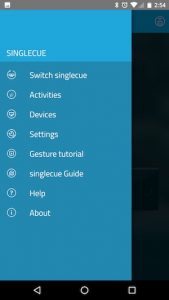
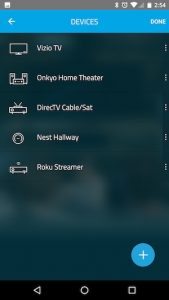
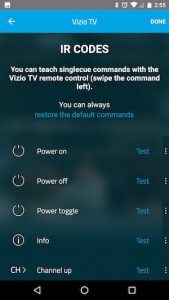
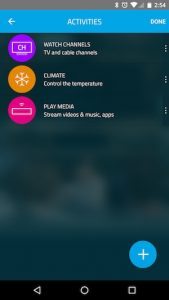
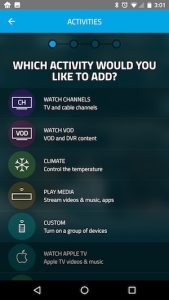
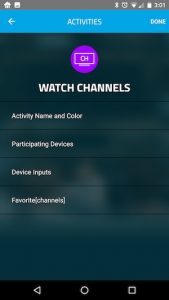
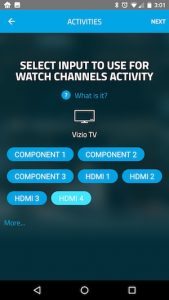
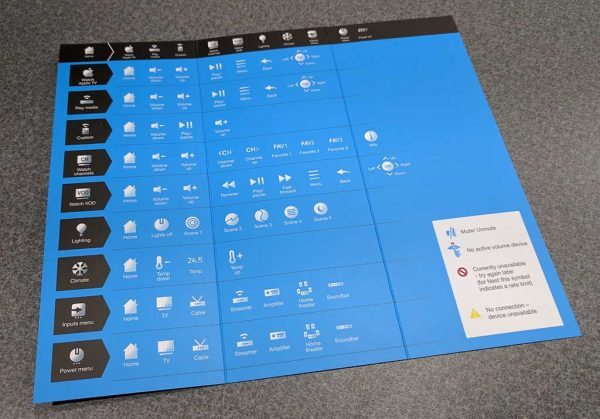
Gadgeteer Comment Policy - Please read before commenting
Julie, your demo video illustrates how poorly this works. I can’t imagine how confused this ‘remote’ would become in a home theater with a (by design) dimly lit room. Or watching a movie with children bouncing at the same time while one is tying to fast forward past a commercial. Interesting technology but not ready for prime time. And yes the Directv remote 10 inches from your left hand would have been far more efficient (and reliable) to use.
Me? I’m still looking for “Remote Control Nirvana” that does’t cost more than my TV or require a computer science degree to program. Why cant the manufacturers standardize? There really isn’t a lot of value add in each remote control being unique to the hardware.
The Singlecue worked the best it ever had when I was making that video… The next day it kept ignoring me when I would do the wake-up gesture, requiring me to do it over and over again.
Have you tried a Logitech Harmony remote?
While the Logitech’s come close, there is still inconsistencies with how each of the devices operate. While simple things like volume up/down and channel work, there are other times that our Apple TV, or Firestick menu navigation is different. (Which button is exit? Which one is back? Which one is Top Menu?)
We operate these in our home theater and one annoying aspect is remotes that are not back lit (fumbling around looking for the remote is only a bit less challenging than trying to figure out which button to press in the dark). And don’t get me started on using my smart phone as a way to change channels;)
So, yes, I have a bit of experience with the Logitech Harmony and am exploring the Logitech Harmony Elite Remote Control, that now works with Alexa (I have two echos). It’s over $300 (ok, less than my TV, but I’d rather spend that money on viewing content, not on a universal remote) – maybe Black Friday sale! Partially satisfied but I’m still looking…
Let me know if you ever find the holy grail of remotes. I’ve given up for now and just use dedicated remotes. 95% of the time we watch through our DirecTV box and the other times we use the Roku. It’s rare that I need to dig out the Onkyo AV receiver remote or the Vizio remote, so I’m fine with just juggling two.
I’m not interested in using my voice to control my home theater equipment or anything else that doesn’t do what I want when I want 100% of the time.
Singlecue sam się wyłącza podczas aktywacji więc nie mogę go sparować
BTW, I suspect folks would be using a different finger when this quit responding;)
Hahahahaha! No doubt! 😉
2023 o singlecue não funciona mais na minha casa só fica atualizando no app do celular